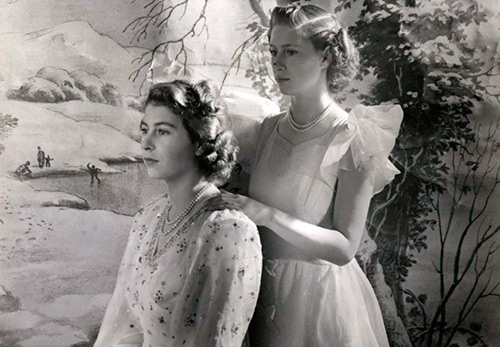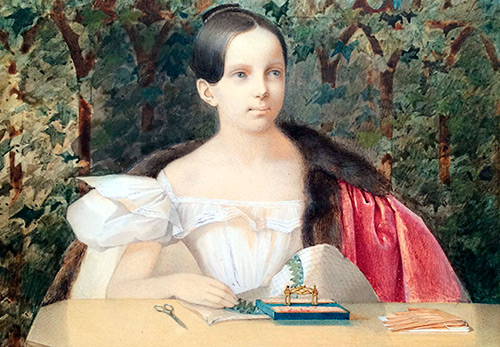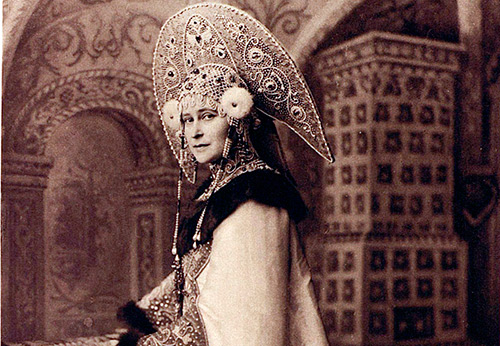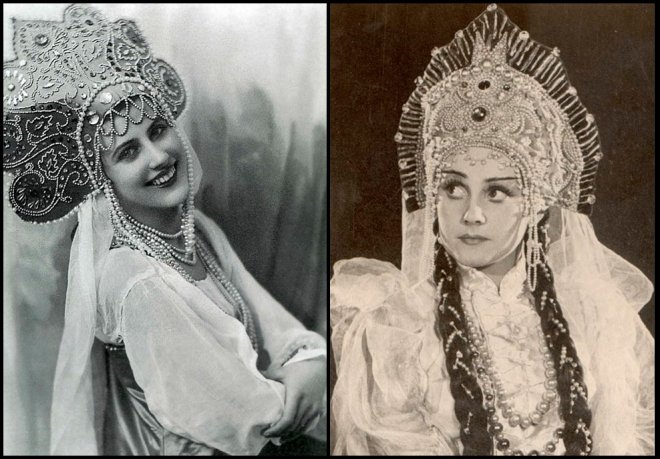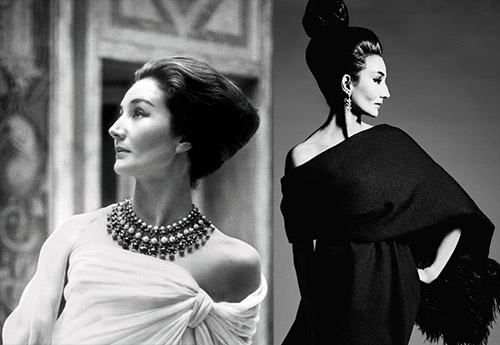Beautiful girls
Countess Vorontsova
On May 20, 1819, Lisa Branitskaya left the Parisian Orthodox Church as Countess Elizaveta Vorontsova. Elizaveta Ksaveryevna and Count Mikhail Semyonovich Vorontsov lived together for almost 40 years, until the very death of Mikhail Semyonovich.
Her father, Count Xavier Petrovich Branitsky, Pole, the great crown hetman - the owner of the large estate Belaya Tserkov in the Kiev province. Mother, Alexandra Vasilievna, nee Engelhardt, Russian, was Potemkin's niece and was reputed to be an immensely rich beauty. Lisa was brought up in severity and lived in the village until she was twenty-seven years old. It was only in 1819 that she went on her first trip abroad for the first time, here in Paris and met Count Vorontsov.
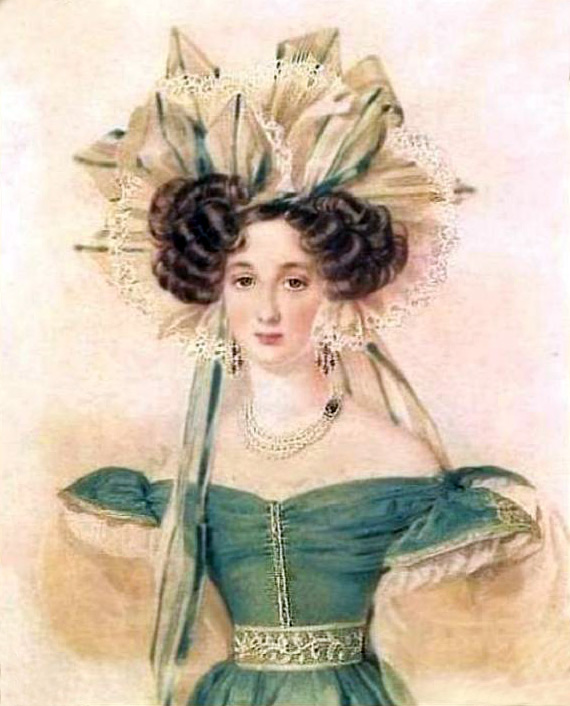
Empress Elizabeth Alekseevna, wife of Alexander I, knew and adored Lisa Branitskaya well. Therefore, apparently fearing that Mikhail Semyonovich's father, Count Vorontsov Semyon Romanovich, who served as the Russian ambassador in London for many years, would be against his son's marriage to a Polish woman, wrote to him: “The young countess combines all the qualities of an outstanding character, to which all the charms are added beauty and intelligence: it was created to make a respected person happy, who will unite his destiny with her. "
However, Lisa, along with her mother, had fears about the impossibility of marriage. After all, Lisa's father decided that the husbands of his daughters would only be the noble gentlemen from a noble family. Her older sisters Ekaterina and Sophia have already married Polish gentlemen from the Potocki family.
Liza, expecting their marriage, as the youngest, sat up with girls (she was born on September 8 (19), 1792), and of course dreamed of marriage. And then Natasha Kochubei, her distant relative, told her with enviable joy that her engagement to Lieutenant General Count Vorontsov was about to be announced. How did it all happen? After all, the count came to meet his future fiancee, and suddenly Liza ... Indeed, both the count and Natasha were not at all against the upcoming marriage, but most likely only because at the age of 37 he finally decided to start a family, and she, like any girl, wanted it. And the groom, what an enviable one.
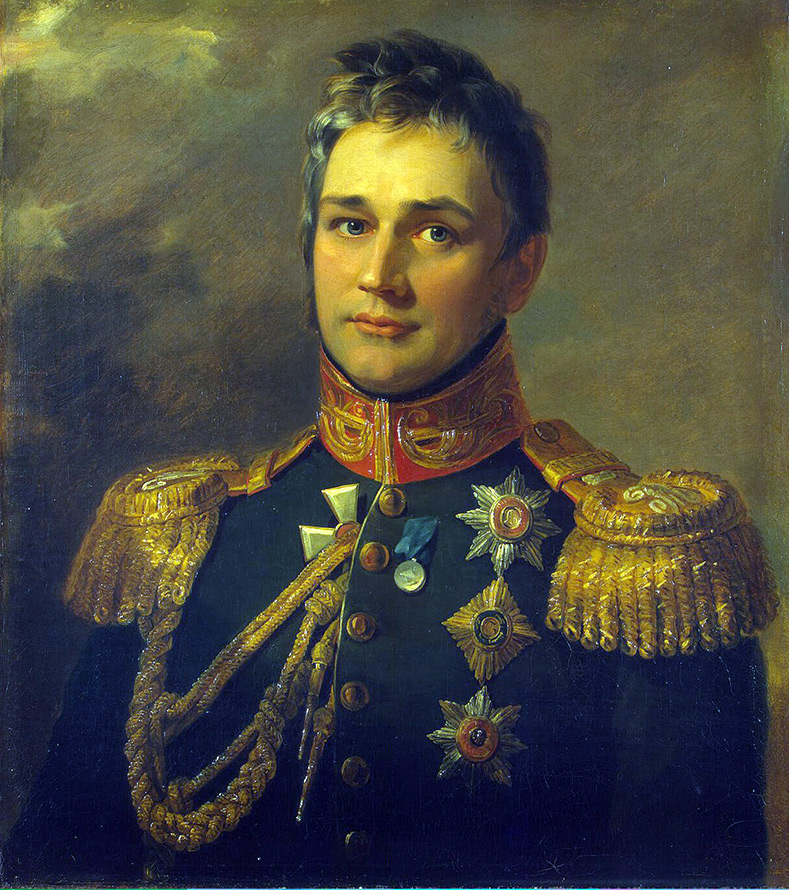
In addition to wealth, nobility of the family, intelligence and courageous appearance, he had something to be proud of. Much has been said about his bravery on the battlefields during the war of 1812. In the battle of Borodino, he himself led the soldiers into a bayonet attack and was wounded. And when he learned that carts had come from his family estate of Andreevsky to take property from their Moscow palace, he ordered to leave the things, and to take the wounded on the carts. Thus, hundreds of wounded were taken out of Moscow, which Napoleon was attacking, and the manor house in Andreevsky turned into a hospital.
As everyone knows, the war with Napoleon ended with the complete defeat of his army (Napoleon was the first to flee Russia, leaving his army in the Russian snows), and Russian troops entered Paris. Before returning to the homeland of the corps, which was commanded by Count Vorontsov, he paid all the financial debts to the local population from his subordinates from his own funds.
It’s good that we didn’t have time to announce the engagement of the count and Natasha Kochubey. And soon, to the surprise of friends and acquaintances, Mikhail Semyonovich asks for Lisa's hand from her mother Alexandra Vasilievna Branitskaya. Taking advantage of the absence of the father, who referred to being busy, the mother and daughter agreed to the marriage. Lisa and her mother's trip to Europe ended with a wedding.
At this time, a portrait of Lisa was painted on porcelain, which was sent to London to the Count's father. Semyon Romanovich noted the attractiveness of the girl and added that over time, the paints on the porcelain do not darken. Indeed, the portrait of the bride Mikhail Semyonovich looks great today, because beauty is eternal.
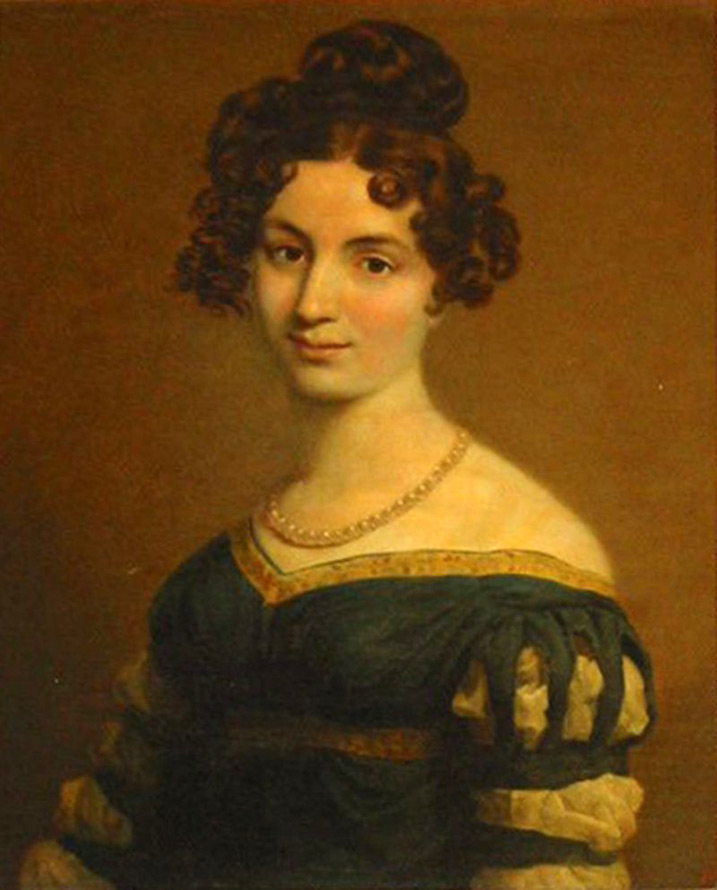
In 1823, Count Vorontsov was appointed governor-general of the Novorossiysk Territory and the governor of Bessarabia. A.S. was in exile in the same places. Pushkin, and of course the fate of the poet intertwined with the fate of the Vorontsovs. The poet admired the countess, her grace, intelligence and beauty. But nowhere and never in his later life does he mention her, only numerous profiles of a beautiful female head could be seen on all the papers of the poet from the Odessa period of his life.
Many tried to find a secret in their relationship, but ... if there was this secret, let it remain in eternity. E.K. Vorontsova to the end of her days kept the warmest memories of Pushkin and read his works almost every day.
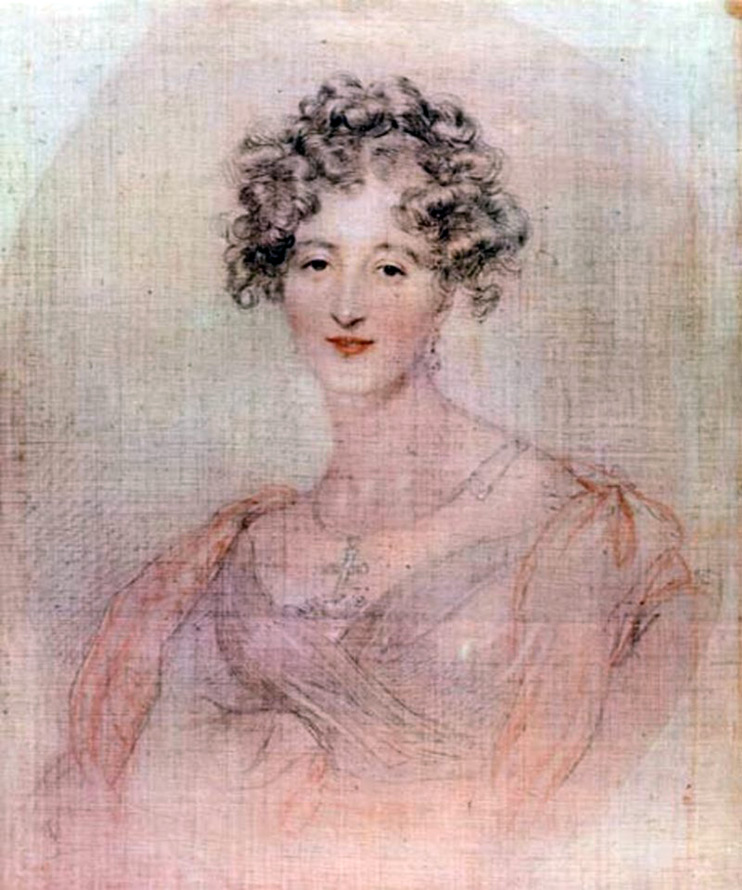
In 1844, Nicholas I offered the count to become the governor of the vast territory of the Caucasus. Mikhail Semyonovich doubted whether he could justify this trust, he felt that his health was shaken, but still accepted the king's offer. And from that moment the south of Russia - Crimea, the North Caucasus and Transcaucasia were under his control. He had to solve the most complicated issues of the Caucasus, torn by sharp contradictions. And he, with the constant participation of his wife Elizaveta Ksaveryevna, successfully solved them.
From the memoirs of colleagues of Count Vorontsov, it is known that Elizaveta Ksaveryevna was always next to her husband. She was his life-giving force, "... the whole region was illuminated by her smile, benevolence, ardent participation in useful and charitable affairs." Always calm, friendly, everyone saw her kind look, heard her kind word. She was next to Mikhail Semyonovich in all his affairs, helped to draw up documents.
In addition to the affairs and concerns entrusted to them by duty, Elizaveta Ksaveryevna passionately loved gardening. She knew botany well. In Alupka, where the Vorontsov palace was built, there were two gardens - an upper and a lower one, which were planted with rare imported plants.
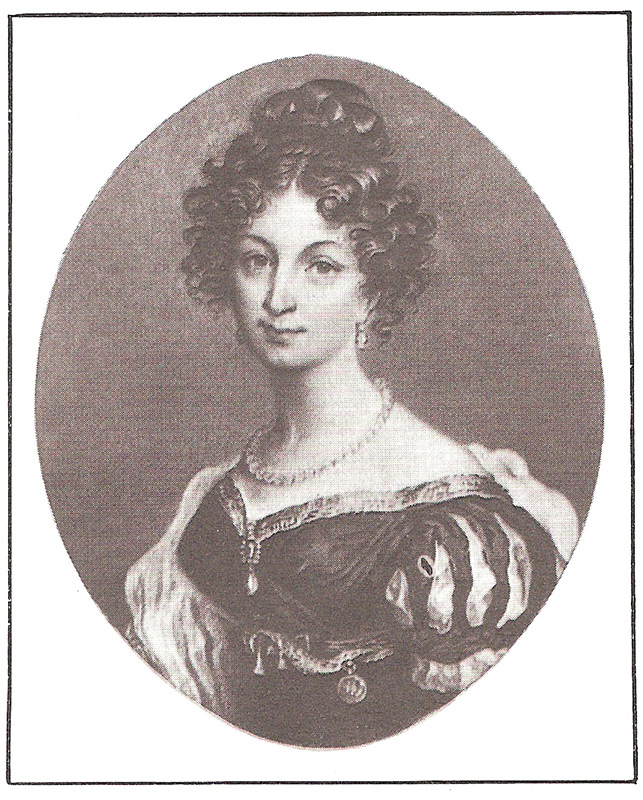
Under her personal guidance, trees and shrubs and her favorite flowers, roses, were planted. The best gardeners of their time worked on the park of Count Vorontsov. But the countess herself was engaged in the arrangement of the rose garden and the selection of varieties of roses. The luxurious collection has been maintained and replenished all the time.
In Odessa, with the assistance of Elizaveta Ksaveryevna, a women's charitable society was founded, which established an orphanage, an orphanage for the elderly and crippled women. And in Tiflis, with her cares, an educational institution of St. Nina, Equal to the Apostles, was founded for the children of employees of the Caucasian governorship. The same establishments were opened in Kutaisi, Erivan, Stavropol, Shemakha.
Her services were highly appreciated at court. Already in 1838 she was awarded by the lady of state, and in 1850 she was awarded the Order of St. Catherine of the Grand Cross - a scarlet ribbon and a star decorated with diamonds... After the death of her beloved husband, she completely retired from secular life, and in Odessa she kept homes for orphans for boys and girls, as well as shelters for the elderly and sisters of mercy.
In memory of her husband, she dedicated the Mikhailovo-Semyonovsky orphanage. Over the years, dedicated only to charity, Vorontsova has given out more than 2 million rubles. So many of the best Russian people represented the best use of wealth on earth. Elizaveta Ksaveryevna, died at the age of 87 on April 15 (27), 1880 in Odessa and was buried in the Cathedral of Odessa next to her husband.
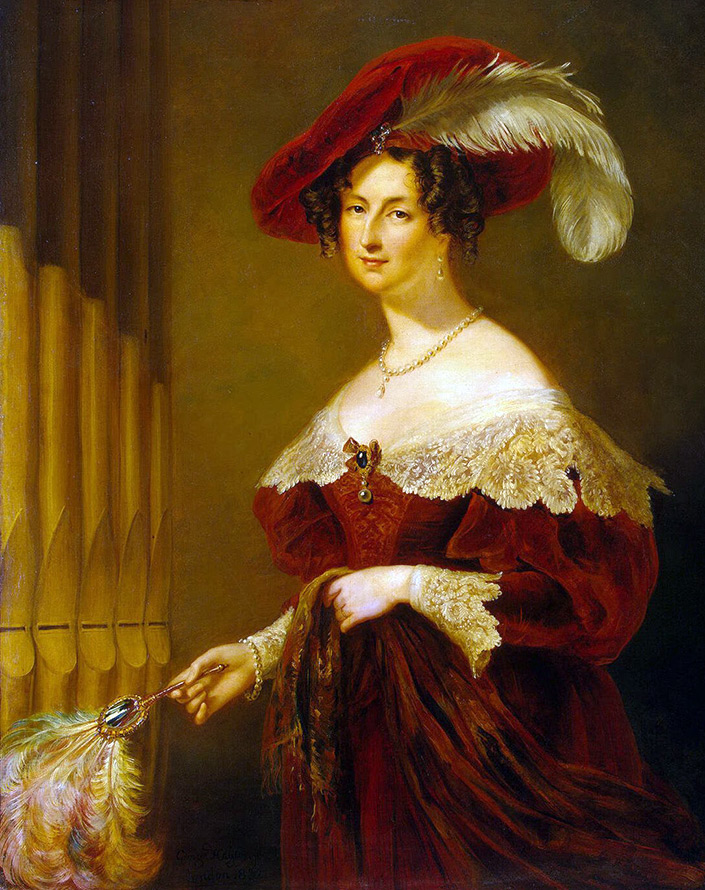
Comments and Reviews
Add a comment
Rating news
Shades of clothing that make women look younger
What shades of hair make women younger: rules and photos
Funny wedding dresses - photos and ideas
12 most expensive down jackets for the winter
How to look 25 at 40: tips from supermodels
Beautiful schoolgirls
Anti-aging haircuts and hairstyles for women
Fashionable skirts for autumn and winter
Fashionable women's trousers for the cold season
Fashionable and stylish sandals for summer 2024
Spring-summer 2024
 Fashionable dresses and tops with thin spaghetti straps
Fashionable dresses and tops with thin spaghetti straps
 Bandana tops: how to wear stylishly and beautifully
Bandana tops: how to wear stylishly and beautifully
 How to put together the perfect men's wardrobe for the summer
How to put together the perfect men's wardrobe for the summer
 Trendy shorts for spring-summer 2024
Trendy shorts for spring-summer 2024
 Fashionable skirts for spring-summer 2024: a guide to online shopping
Fashionable skirts for spring-summer 2024: a guide to online shopping
 The most fashionable dresses spring-summer 2024: styles and colors
The most fashionable dresses spring-summer 2024: styles and colors
 Fashionable total look 2024: image ideas and trends
Fashionable total look 2024: image ideas and trends
